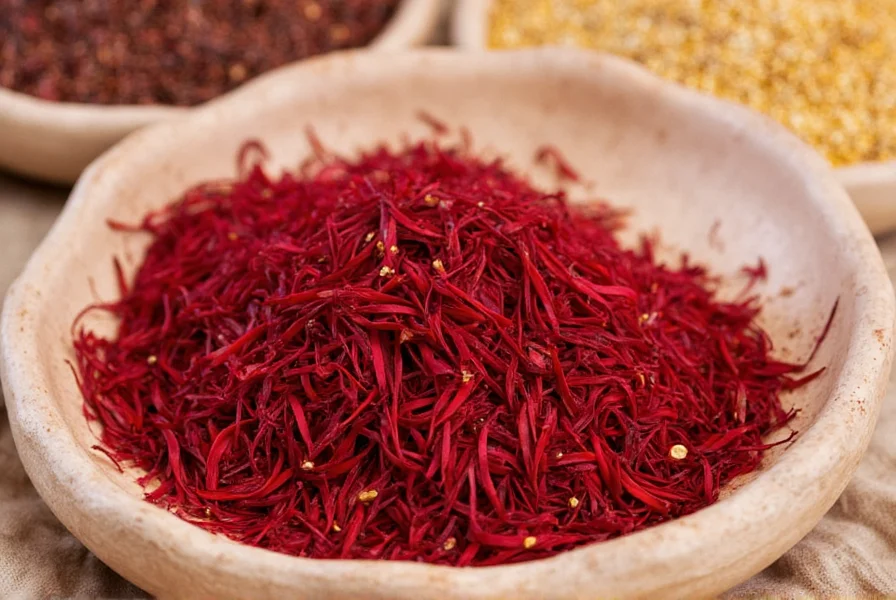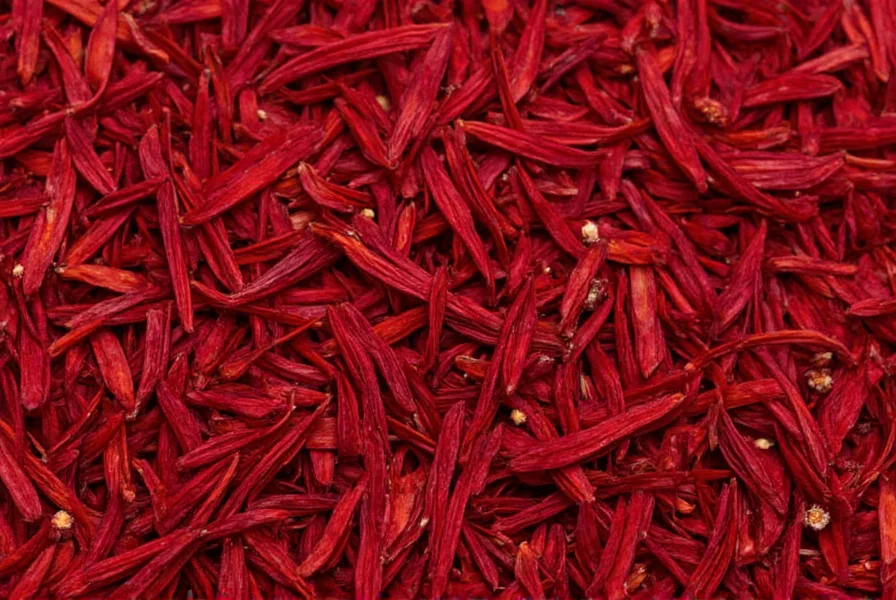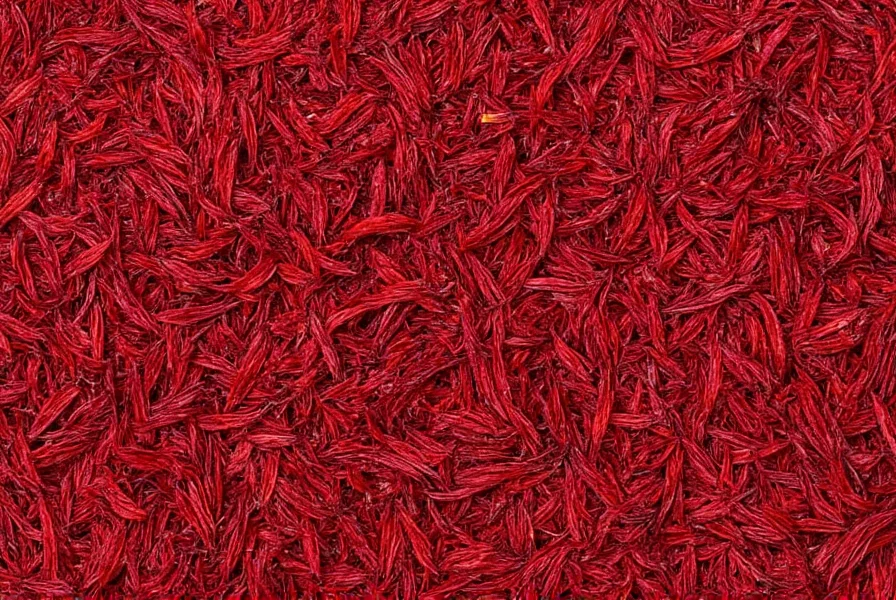When exploring the world of luxury culinary ingredients, the title of most expensive spice in the world belongs unequivocally to saffron. This crimson-hued treasure commands prices that dwarf even the finest vanilla or cardamom, with genuine Persian saffron fetching between $5,000 and $10,000 per pound in premium markets. The astronomical cost isn't merely a matter of rarity but reflects the extraordinary human effort required to bring this spice from flower to kitchen.
The Labor Behind the Luxury: Why Saffron Costs So Much
The fundamental reason why saffron is so expensive lies in its harvesting process. Each Crocus sativus flower produces only three stigmas—the part used as saffron—which must be hand-plucked within a narrow 1-2 week blooming window each autumn. These delicate threads then require careful drying to preserve their flavor, color, and aroma compounds.
Consider these staggering production metrics:
| Production Metric | Value |
|---|---|
| Flowers needed per pound of saffron | 75,000 |
| Stigmas per flower | 3 |
| Harvesting hours per pound | 400+ |
| Global annual production | 200-300 metric tons |
Saffron vs Other Premium Spices: A Price Comparison
While several spices command premium prices, saffron's cost per weight unit remains unmatched. Understanding saffron vs vanilla price comparison reveals why:
- Saffron: $5,000-$10,000 per pound (requires only tiny amounts per dish)
- Vanilla: $600-$1,200 per pound (labor-intensive pollination but higher yield)
- Cardamom: $25-$50 per pound (mechanically harvestable pods)
- Long pepper: $100-$200 per pound (making a comeback in gourmet cooking)
The key difference lies in the saffron production process—while vanilla requires hand-pollination, each vanilla orchid produces multiple pods that can be harvested mechanically. Saffron's three delicate threads per flower simply cannot be efficiently harvested by machine without damaging the precious stigmas.
Geographical Indications and Quality Tiers
Not all saffron carries the same price tag. The cost of saffron per pound varies significantly based on origin and quality:
- Persian (Iranian) Saffron: Accounts for 90% of global production; premium grades (Sargol, Negin) command highest prices
- Kashmiri Saffron: Rarer with deeper color but lower yield; slightly higher price than Persian
- Spanish Saffron: Often blends lower-grade threads; moderate pricing
- Adulterated Products: Mixed with safflower or turmeric; sells for $5-$20 per ounce
The European Union's Protected Geographical Indication status for Spanish and Kashmiri saffron helps maintain premium pricing for authentic products. Meanwhile, Iranian saffron—despite producing the majority of the world's supply—commands high prices due to its superior crocin content (responsible for color) and safranal levels (responsible for aroma).

Historical Context: Saffron's Ancient Luxury Status
Saffron's status as the rarest spices globally isn't a modern phenomenon. Historical records show:
- Ancient Egyptians used it in religious ceremonies and as medicine
- Minoan civilizations depicted saffron harvests in 16th century BCE frescoes
- Medieval European apothecaries valued it more than gold by weight
- Elizabethan England passed laws regulating saffron adulteration
This historical premium pricing persists because the saffron production process has changed remarkably little in 3,500 years. Modern growers still rise before dawn to harvest flowers, and workers still sort threads by hand—methods that simply cannot be scaled efficiently.
Practical Considerations for Consumers
When evaluating how much does real saffron cost, consumers should understand:
- True saffron should cost at least $5-$10 per gram (anything significantly cheaper is likely adulterated)
- A single ounce should yield 15-20 premium dishes (not dozens as with lesser spices)
- Quality indicators include deep red color, floral aroma, and bitter taste
- Proper storage in airtight containers away from light preserves potency for 2-3 years
The global saffron market continues to grow at 5% annually as chefs and home cooks recognize its irreplaceable flavor profile—earthy with subtle honey notes and a distinctive aroma that transforms rice, seafood, and desserts. While alternatives exist for color (annatto) or flavor (safflower), none replicate saffron's complex sensory profile.

Conclusion: The Enduring Value of the World's Priciest Spice
Saffron maintains its position as the costliest spice through a perfect storm of biological limitations and human labor requirements. Unlike other luxury goods that might see production efficiencies over time, saffron's fundamental harvesting challenge—the need for human hands to pluck three minuscule threads from each flower—appears technologically insurmountable. As long as consumers value its unique flavor, color, and aroma in dishes from Spanish paella to Persian tahdig, saffron will continue to command prices that reflect its extraordinary production story.
Frequently Asked Questions
Why is saffron more expensive than gold by weight?
Saffron isn't actually more expensive than gold by weight. While premium saffron can cost $5,000-$10,000 per pound ($11-$22 per gram), gold trades around $60 per gram. The misconception arises because tiny amounts of saffron are used per dish, making its culinary cost per serving comparable to gold's value.
How can I verify if saffron is authentic and worth the price?
Authentic saffron should have deep red threads with orange tips, release color gradually in warm water (not instantly), have a floral-honey aroma, and taste slightly bitter. Premium saffron costs $5-$10 per gram; anything significantly cheaper is likely adulterated with safflower or turmeric. Look for ISO 3632 certification and purchase from reputable spice merchants.
What makes Persian saffron the most expensive variety?
Persian saffron (particularly Sargol and Negin grades) commands premium prices due to its superior crocin content (providing intense color), higher safranal levels (for aroma), and meticulous harvesting standards. Iran produces 90% of the world's saffron, and their premium grades undergo rigorous sorting to ensure only the longest, most vibrant threads reach market.
How much saffron do I actually need for cooking?
A little saffron goes a long way. For most recipes serving 4-6 people, you only need 15-20 threads (about 0.1 grams). Professional chefs often use a 'saffron press' method: steeping threads in warm liquid for 15-20 minutes before adding to dishes. A single ounce of premium saffron should yield 15-20 high-end dishes.











 浙公网安备
33010002000092号
浙公网安备
33010002000092号 浙B2-20120091-4
浙B2-20120091-4